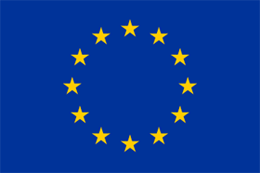CITES Tree Species Programme
The CITES Tree Species Programme aims to provide direct financial assistance to Parties in taking conservation and management measures to ensure that their trade in timber, bark, extracts and other products from CITES-listed tree species is sustainable, legal and traceable, thus enhancing compliance with the Convention and strengthening capacity for tackling illegal trade.
Information on the first phase of the CITES Tree Species Project, funded by the European Union, can be found on the official website for this project.
A second phase of the CITES Tree Species Project, funded by Germany through the International Climate Initiative (IKI), started in 2024. A dedicated webpage on this second phase of the project is currently under construction.
Background
Concerned that the long-term survival of commercially valuable tree species may be threatened by over-exploitation, the CITES Conference of the Parties has agreed, over time, to include more than 900 tree species under the CITES Appendices. Products of these tree species may only be exported if the Scientific Authority of that Party has advised that the export of the specimens will not be detrimental to the survival of the species in the wild and if the Management Authority has verified that the specimens have been acquired legally.
To that end, the CITES Tree Species Programme aims to provide direct financial assistance to Parties in taking conservation, management and/or regulatory measures to ensure that their trade in timber, bark, extracts and other products from CITES-listed tree species is sustainable, legal and traceable, thus enhancing compliance with the provisions of the Convention and strengthening capacity for tackling illegal trade.
Mission
The CITES Tree Species Programme seeks to foster economically, socially and environmentally sustainable development. It helps maximizing CITES contributions to the UN Sustainable Development Goals, notably Goal 15 as it relates to sustainably managing forests and halting biodiversity loss. The Programme aims to improve and strengthen forest governance to ensure benefit from long-term species conservation and contribute to rural development in often remote areas, sustainable economic growth at country level and long-term poverty alleviation.
Core areas of work
The Programme supports Parties that export valuable parts and derivatives of CITES-listed tree species by providing them direct financial assistance for taking conservation and management measures to ensure that their trade in timber, bark, extracts and other products from CITES-listed tree species is sustainable, legal and traceable. This will be achieved through improved practical and technological capacity for the development of non-detriment findings, enhanced silvicultural and ecological knowledge for the management of CITES-listed tree species, increased capacity in the identification of timber and non-timber forest products and effective information and tracking systems.
Resolutions and Decisions
Notification No. 2025/059 of 25 April 2025: CITES Tree Species Project: Call for Project Proposals
Decisions 19.49 & 19.50 CITES Tree Species Programme
Related documents
- SC78 Doc.24 CITES Tree Species Programme
- PC27 Doc.14 CITES Tree Species Programme
- SC77 Doc.25 CITES Tree Species Programme
- PC26 Doc.15 CITES Tree Species Programme
- CoP19 Doc.20 CITES Tree Species Programme
- PC25 Doc. 8 CITES Tree Species Programme
- CoP18 Doc.16 CITES Tree Species Programme
- PC24 Doc.9.2 The CITES Tree Species Programme
Core Areas of Work
- Formulation of non-detriment findings
- Procedure and formulation of legal acquisition findings
- Marking & traceability
- Tree products identification
- Capacity building & governance
Geographical & Taxonomic scope
During the first phase of the CITES Tree Species Project, the taxonomic scope was as follows:
- Asia: Dalbergia cochichiniensis, Pterocarpus sanctalinus, Taxus spp., Aquilaria spp., Gyrinops spp., Gonystylus spp.
- Africa: Diospyros spp. (Madagascar), Dalbergia spp. (Madagascar), Pericopsis elata, Osyris lanceolata, Pterocarpus erinaceus, Prunus africana, Guibourtia demeusei; G. pellegriniana; G. tessmsnnii
- Central and South America and the Caribbean: Swietenia spp., Dalbergia spp., Platymiscium dimorphandrum, Platymiscium yucatanum, Enterolobium cyclocarpum, Lonchocarpus castilloi, Astronium graveolens, Aniba rosaedora, Bulnesia sarmientoi, Guaiacum spp.
Expected Programme Outcomes
- Ensure the sustainable management of rare tree species and their products;
- Contribute to legal and traceable trade in specimens of CITES tree species;
- Improve and strengthen forest governance, policies for forest management, and enforcement capacity and ensure benefit from long-term; and
- Contribute to the rural development in often remote areas, sustainable economic growth at a country level, a healthy private sector, and long-term poverty alleviation.
Steering Committee
- During the first phase of the CITES Tree Species Project, an Advisory Committee was established to ensure strategic advice and guidance to the programme, through advice on programme implementation, proposal applications, annual progress report.
- A Steering Committee, carrying similar functions will be established under the second phase of the CITES Tree Species Project, currently ongoing.
Donors
The CITES Tree Species Programme is dependent on donor support.

European Union – has been a most important donor, whose contribution includes EUR 7 million earmarked to support the CITES Tree Species Programme to be implemented by the CITES Secretariat, and EUR 500,000 towards ‘bridging activities’ that allow the support of follow-up activities from the first phase of the CITES Tree Species Project.

Germany – through the International Climate Initiative (IKI) of the Federal Ministry for the Environment, Climate Action, Nature Conservation and Nuclear Safety – contributes EUR 10,000,000 under a six-year project, second phase of the CITES Tree Species Project entitled "CITES Tree Species Project – Sustainable trade and forest governance".

Regional Support
During the first phase of the CITES Tree Species Project, funded by the European Union under the CITES Tree Species Programme, three Regional Coordinators were appointed to facilitate a smooth implementation in the selected countries. Regional coordinators will also be appointed during the second phase of the CITES Tree Species Project, funded by Germany. The Regional Coordinators' tasks include:
- Assist with the formulation of national project needs and priorities;
- Assist with the design of projects/activities;
- Monitor the progress of the implementation of approved activities and budgeting by implementing agencies;
- Assist in convening meetings as relevant;
- Provide technical advice to avoid duplication of effort; and
- Interact with other projects and programmes of the CITES Secretariat as requested
CITES Tree Species Programme Team
Mr Thomas Deleuil, CTSP Coordinator
email: deleuil@cites.org
Ms Siiri Mäkelä, Associate Programme Management Officer
email: siiri.maekelae@cites.org
General inquiries: cites.info-cites@un.org
Regional Coordinator for Central and South America and the Caribbean
email: (tbc)
Regional Coordinator for Africa
e-mail: (tbc)
Regional Coordinator for Asia
e-mail: (tbc)
